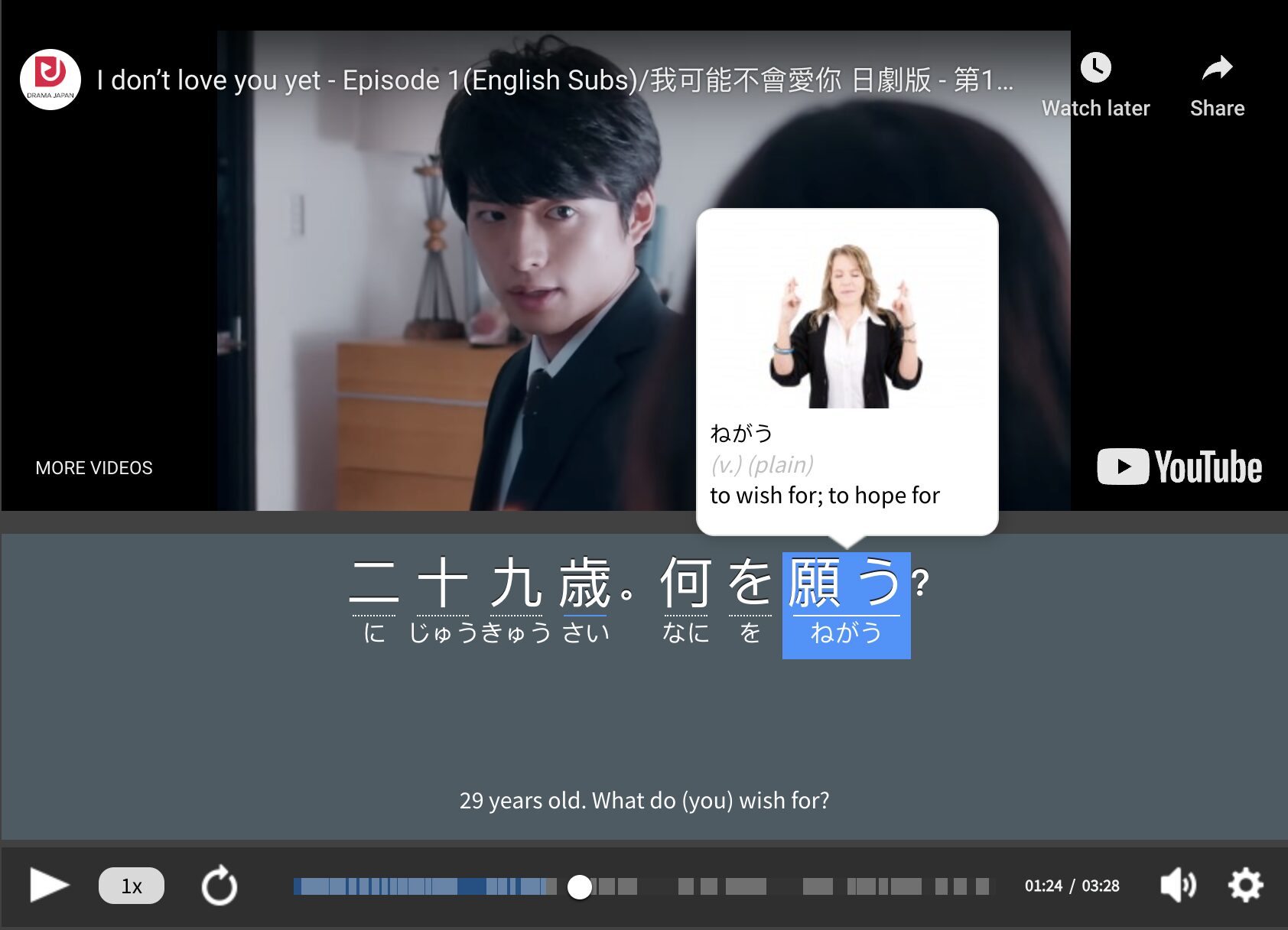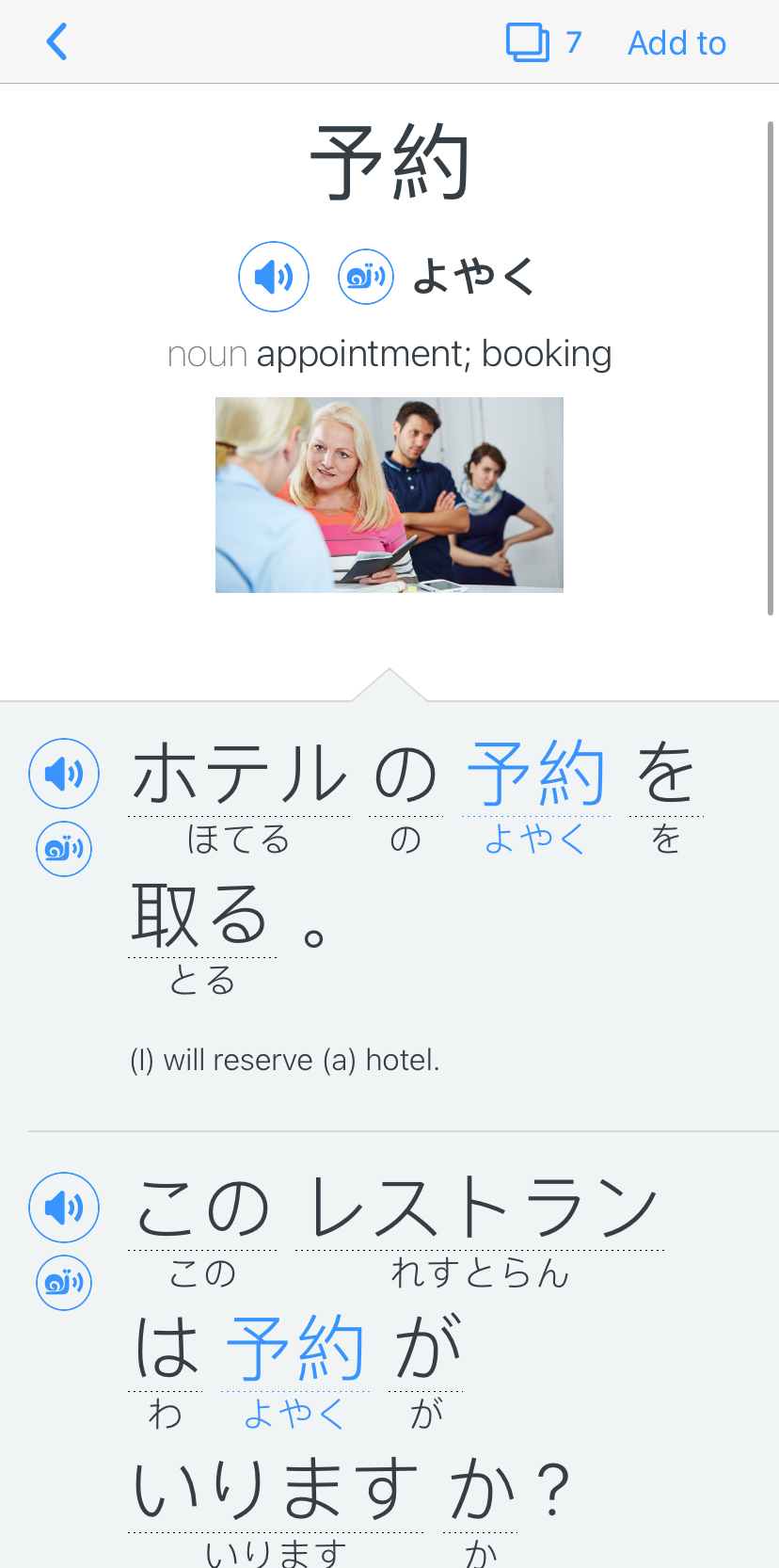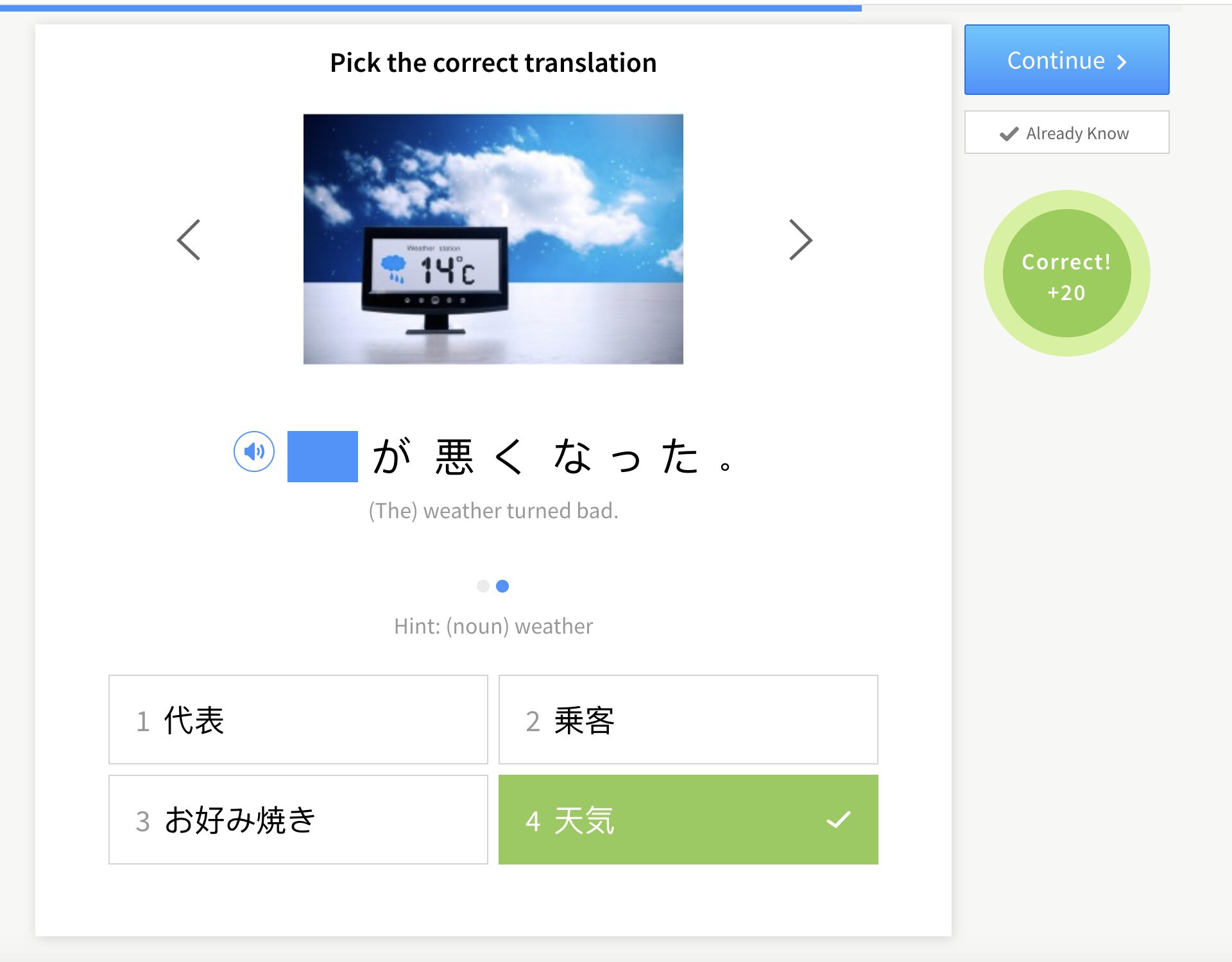Contents
- 1. Repeat Everything You Hear
- 2. Record Yourself Speaking Japanese
- 3. Keep a Japanese Diary
- 4. Ask Native Japanese Speakers for Help
- 5. Pay Close Attention to Difficult Sounds
- 6. Practice Conversation Daily
- 7. Learn Hiragana and Katakana as Quickly as Possible
- 9. Practice Tongue Twisters in Japanese
- And One More Thing…
Improve Your Japanese Pronunciation with 9 Strategies

When you’re studying Japanese by yourself, it can be easy to just read, write and listen without ever actually saying anything out loud. Then when it finally comes time to have conversations with native speakers, your mind goes blank and your tongue isn’t making the right sounds.
Fortunately, Japanese pronunciation is fairly simple and straightforward. I’ve found that the key is just to say the words and phrases you’re learning out loud as much as possible—and here are my favorite strategies to do so.
Download: This blog post is available as a convenient and portable PDF that you can take anywhere. Click here to get a copy. (Download)
1. Repeat Everything You Hear
Repeat everything you hear, paying special attention to the ups and downs or the “music” of the language (intonation), and also the tricky sounds (pronunciation).
When you watch Japanese TV programs or movies, there will be many phrases and words that you’ll hear and think, “I want to learn that phrase.”
Pause the movie and mimic what you hear, paying close attention to intonation as well as pronunciation. Remember to turn on the subtitles so you can echo back the same thing as the characters. Subtitles are available on most streaming sites and other video platforms, including the video-based program FluentU which adds interactive subtitles to its Japanese media clips.
FluentU takes authentic videos—like music videos, movie trailers, news and inspiring talks—and turns them into personalized language learning lessons.
You can try FluentU for free for 2 weeks. Check out the website or download the iOS app or Android app.
P.S. Click here to take advantage of our current sale! (Expires at the end of this month.)

Then go an extra step beyond that.
How are the actors’ facial expressions when they speak? Do they bow, smile or frown when they say certain things?
Speaking like a native doesn’t stop at pronunciation and intonation. To speak perfect Japanese, you have to mimic everything the natives do. It’s exactly how you learned your first language as a child—copying everything around you so that you sounded and looked identical. The same rules apply to your Japanese studies!
This is also known as shadowing. You can learn more about it here:
The Shadowing Technique for Learning Japanese | FluentU Japanese Blog
Japanese shadowing is one of the most natural language learning methods that can help you obtain native-like fluency. Similar to the way you learned your first language as…
2. Record Yourself Speaking Japanese
When you’re speaking out loud, it can be difficult to detect your own pronunciation errors. By recording yourself and listening back, you can easily spot where you’re struggling.
If possible, compare it with a native speaker’s voice. You might want to find a recording of a native speaker reading out an audiobook, follow it by reading that part of the book and then try reading the text out loud just as they do.
15 Best Japanese Audiobooks for Language Learners | FluentU Japanese Blog
Japanese audiobooks let you listen to stories and language lessons on the go. You could be commuting, waiting in line or running errands while being entertained and…
3. Keep a Japanese Diary
Write down your thoughts and then record yourself reading it out loud. If you write about events and things going on in your life, it will be more interesting for a native speaker to listen to, too. You could even up the challenge by keeping a Japanese video diary or even a blog.
https://www.fluentu.com/blog/japanese/japanese-writing-practice/
4. Ask Native Japanese Speakers for Help
If you’re having a normal conversation with a Japanese person, they won’t usually correct your pronunciation unless your error changes the word completely. For example, someone might step in and say something if you want to say おいしい (delicious) but accidentally end up saying 牛/うし (cow) instead!
If you’ve ever spoken to someone in English and the other person’s native language isn’t English, they’ll probably have some kind of accent. Do you correct them constantly? Of course not!
Japanese people are the same; they usually won’t correct your poor pronunciation, and will just care about understanding you. However, in my experience, if you actually ask for help on specific words and phrases, they’re only too happy to help you out. Simply ask your Japanese friends whether your pronunciation is all right, and ask for their help to practice.
If you don’t have any Japanese friends you can ask, you can find a penfriend or participate in a local or online language exchange program. Studying a language becomes much more fun when you have someone to practice with!
How to Make Japanese Friends Online in 6 Steps | FluentU Japanese Blog
To make Japanese friends online, you have to put yourself out there and get involved in the right places. There are many online communities you can tap into such as…
5. Pay Close Attention to Difficult Sounds
Fortunately, there aren’t that many difficult sounds in Japanese, but there are a few you have to be careful of.
One is the R sound (in” ら, り, る, れ and ろ). It’s somewhere between an L and an R sound (which is why the Japanese often struggle to differentiate between the English L and R sounds). Check out this great video on how to correctly pronounce the Japanese R sound.
You must also master the vowels, as every letter in Japanese except one (N) contains a vowel. The five vowels are:
- あ A (as in father)
- い I (as in eat)
- う U (as in you)
- え E (as in elephant)
- お O (as in oar)
This YouTube video provides more information on the vowels, including sound clips from a native speaker and how to shape your mouth when uttering the sounds.
For more information on mastering Japanese sounds:
Japanese Phonology: 9 Basics to Remember | FluentU Japanese Blog
Understanding Japanese phonology or phonetics can make a huge difference in the way you sound out words in Japanese and how you’ll be understood by native speakers. So…
6. Practice Conversation Daily
As well as practicing words and phrases when studying alone or in class, the best way to get fluent in Japanese is to speak it!
Speak Japanese as much as you possibly can, preferably with native speakers. Listen to them, the way their voice goes up and down when they speak, how they pronounce the difficult sounds mentioned earlier and repeat them as best you can.
Don’t feel foolish—they’ll be impressed with how close to a native you sound!
If you don’t happen to have a Japanese-speaking friend around to help you out, then you can make one on a language exchange site, as noted earlier. But you might also want to supplement your more casual Japanese conversations with a little professional help—this will ensure that you’re catching all the quirks in your pronunciation and getting the feedback you need to seriously improve.
5 Best Japanese Chat Apps to Practice Your Conversation Skills | FluentU Japanese Blog
Download a chat to learn Japanese app and say hello to your new Japanese learning best friend… literally. Use these five Japanese chat apps to find a native Japanese…
7. Learn Hiragana and Katakana as Quickly as Possible
A dead giveaway that you’re foreign—for everyone learning a new language, not just those studying Japanese—is your native tongue’s accent creeping into your speech. We all do it, because that’s how we’ve always spoken.
The best thing to do when you learn a new Japanese word or phrase is to only use your Japanese knowledge, and forget everything about how you might pronounce it in your first language.
This is the main reason I’d recommend learning hiragana and katakana as quickly as possible—it’s easier to automatically use Japanese-only pronunciation.
How to Learn Hiragana and Katakana Fast: the Complete Guide to Two Key Japanese Writing Systems | FluentU Japanese Blog
If you’re curious how to learn Hiragana and Katakana quickly, then you’ve come to the right place! Read this post to learn all about these two key Japanese writing…
If you study using romaji, it can be easy to make pronunciation mistakes because your brain still wants to read it in your first language.
When you were a small child, you learned pronunciation by mimicking others, copying from your parents or siblings and copying those around you. Use the same approach with any new language you’re studying. Think of your mind as a blank slate, and the only thing you’re remembering is the Japanese way of speaking. Make your first language and Japanese completely separate in every way.
That goes for translating, too—don’t do it! Associate phrases and sounds with their true Japanese meanings, not their English equivalents.
9. Practice Tongue Twisters in Japanese
We’re all familiar with tongue twisters in our native language after stumbling over them in childhood.
Well, Japanese has plenty of its own unique tongue twisters to offer!
You’ve got to try to say them fast, which is great for speaking Japanese at a more natural pace in conversation. You’ll train your mouth muscles to enunciate each syllable, making those sounds clearer and more natural. It’s like a workout for your tongue, improving your accuracy and fluency with each repetition. Here’s a fun collection of Japanese tongue twisters to get you started:
18 Japanese Tongue Twisters for Pronunciation Practice | FluentU Japanese Blog
Japanese tongue twisters are an effective way to practice pronunciation and learn about Japanese culture. Read this guide to learn 18 tongue twisters in Japanese (like…
Following these simple steps can help you reach native-like pronunciation so that people will think you’re an excellent Japanese speaker, even if you’re not yet!
Best of luck to you!
がんばってください!
Download: This blog post is available as a convenient and portable PDF that you can take anywhere. Click here to get a copy. (Download)
And One More Thing…
If you’re like me and prefer learning Japanese on your own time, from the comfort of your smart device, I’ve got something you’ll love.
With FluentU’s Chrome Extension, you can turn any YouTube or Netflix video with subtitles into an interactive language lesson. That means you can learn Japanese from real-world content, just as native speakers actually use it.
You can even import your favorite YouTube videos into your FluentU account. If you’re not sure where to start, check out our curated library of videos that are handpicked for beginners and intermediate learners, as you can see here:
FluentU brings native Japanese videos within reach. With interactive captions, you can hover over any word to see its meaning along with an image, audio pronunciation, and grammatical information.
Click on a word to see more examples where it's used in different contexts. Plus, you can add new words to your flaschards! For example, if I tap on 予約, this is what pops up:
Want to make sure you remember what you've learned? We’ve got you covered. Each video comes with exercises to review and reinforce key vocab. You’ll get extra practice with tricky words and be reminded when it’s time to review so nothing slips through the cracks.
The best part? FluentU tracks everything you’re learning and uses that to create a personalized experience just for you. Start using the FluentU website on your computer or tablet or, better yet, download our app from the App Store or Google Play.
Click here to take advantage of our current sale! (Expires at the end of this month.)











